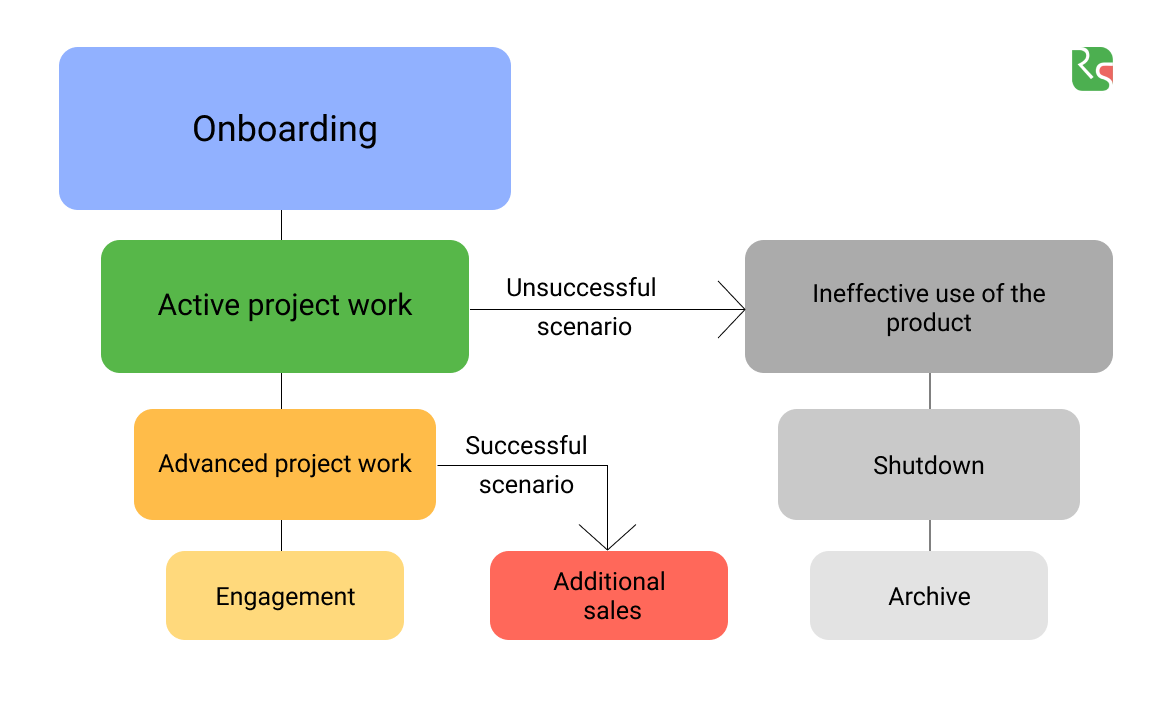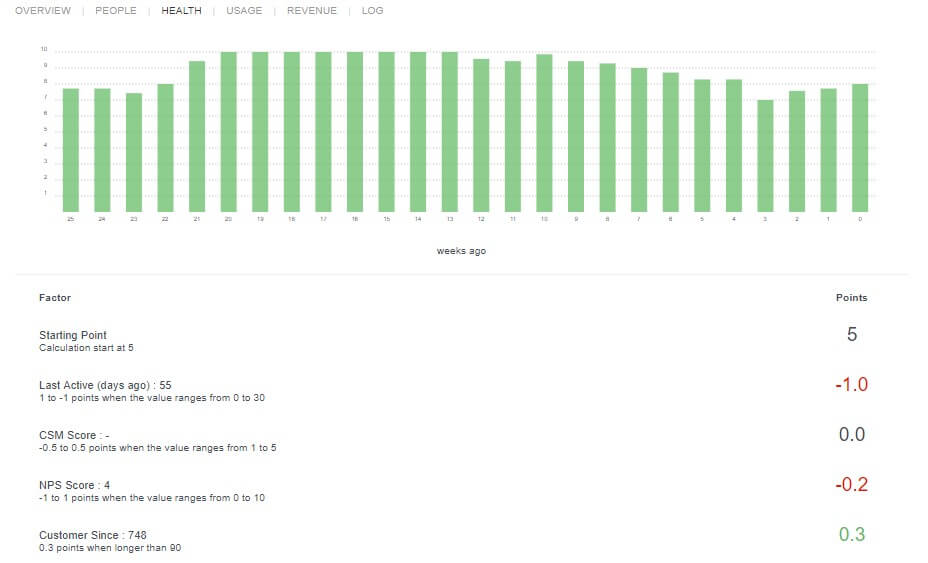If you don’t care about your clients, your competitors will certainly do. To avoid this, SaaS companies should have Customer Success Department. In this post, we’d like to share our experience of building Customer Success and tell why this department is essential for both clients and company.
What is Customer Success?
The name itself is rather eloquent. Some companies periphrase it like a “perfect experience of a customer”. Well, in Ringostat we prefer to say that this department takes care of our clients. Such an explanation seems the most full for us.
Customer Success is a rather new phenomenon. More frequently it can be mentioned in services that are connected to the IT sphere and SaaS. This can be easily explained as it is not that simple to work with complicated products and information technologies. Not knowing all the opportunities, a user won’t achieve the expected outcome — and the company has a risk to lose a client.
Customer Success department monitors the experience of product usage so this won’t happen. Managers are responsible for the following actions:
- making users satisfied with the work of the service;
- make sure that a user discovered all the opportunities, figured them out and fully used;
- help users to achieve the highest results;
- help them to avoid potential risks in the work that are not always obvious.
Thus, Customer Success is kind of a “fairy godmother” that is always on the client’s side and ready to solve his issues even before they appear. Meanwhile, this fairy is rather interested as the main task of the manager is to make a client satisfied and successful. Moreover, KPI metrics or metrics of the Customer Success department’s effectiveness are based on this.
So what’s the point?
Someone might say: “So why do I need such a specialist? I am talking to the account manager and there is always tech support for extra situations”. For sure, the whole team is interested in the successful experience of the client, however, every department has its tasks.
Let’s compare. Technical support is responsible for the primary system setup. After this, it works with inbound requests only. The support manager replies to all technical questions that receive the company. And most frequently he deals with situations that have already happened. This is under their responsibility but other tasks that are not connected to the “filling” of the service are beyond their control.
The account manager concludes treaties, signs acts, etc. He monitors the project so it is prolonged in time. Contacts the user to remind him to pay the expense or discover the reasons of the refusal to work with the service.
For sure, all these details are important for the client. But, first of all, he is interested in actual issues. The success of the business, sales, increase of the customers’ flow. These things are under the responsibility of the Customer Success department.
Duties of the Customer Success Manager
Let’s start with the fact that this employee doesn’t wait for a user’s request. Customer Success Manager or briefly CSM is the first who contacts the client to discover needs and wishes. In fact, he becomes the confidant of the user while the communication with the company.
About 80% of the manager’s time takes cooperation with the product consumers — by email, phone, skype. The duties of such an employee may differ depending on the type of service, however, we will describe the most common.
Onboarding
It’s the whole process that lies in the familiarization of the client with the value and opportunities of the product. Training is only its part. The role of the user’s interaction with the service can be illustrated in the following way:

As the client starts to work with the solution, he receives the whole chain of letters from Customer Success. The basics of work with call tracking, virtual PBX are described there. Useful tips on work with settings are provided as well. All this helps to quickly go deeper at work, evaluate service advantages and profits gained with its help.
Help and recommendations
Customer Success Manager is responsible for the user’s effective work with the solution. That’s why he monitors whether a client fully uses the capabilities of the service. To do so, a manager sees how the project is set and which options are used. If the basic settings still aren’t changed — it’s a sign to contact the client and help him.
Moreover, CSM gets involved in the client’s business processes and analyzes the product’s capabilities that can be used for its optimization. Due to the knowledge of different business niches specifics, a manager concludes what would perform better for a certain campaign. He can recommend the appropriate solution and optimal customization to get the maximum profit from the service.

A multilanguage menu was required there. It would transfer calls to the sales rep that speaks the needed language. We discussed all the nuances with a user and customized the voice menu. All in all, we solved more tasks in addition to the distribution of the calls based on the customers’ language”.
Proactivity
One of the most crucial duties of CSM — prevent the appearance of difficulties. A client may not know that something has gone wrong but a manager will necessarily notice that.
For example, a manager verifies the project settings and sees that the client’s notification about missed calls is muted. This creates a situation when sales reps don’t call customers back and the client loses the profit. In this case, CSM promptly informs the user and removes the issue.
Other not obvious signs about the difficulty are the decrease of the number of calls, the increase of missed requests percentage. Or it may also be the presence of strange calls as at the example below:

“Complaints book”
Customer Success Manager deals with controversial moments, questions and suggestions about service improvement from clients. A lot of companies make decisions on the development of the update based on this information. Thus, a service is more likely to get into users’ needs.
Why Customer Success is useful for a client.
- “Your person” in a company. Ready to give the maximum of his time to the client and his tasks.
- Searches for individual strategies and solutions. Monitors the correctness of the project customization.
- Prevents potential risks and difficulties.
All these actions are made to give a client a feeling of care from service, as well as the understanding that he works in tandem with its representatives. And, for sure, gained the maximum profit, being the regular client. This is especially actual for SaaS. As more frequently these services work by subscription. Thus, it is important for them to have a partnership rather than a once made purchase. However, it’s only the side of the medal that sees the user. But there is another one.
The company’s existence depends on the clients’ satisfaction of the product. That’s why Customer Success constantly monitors metrics that display the level of content. CSM uses special Customer Success and NPS platforms to rate the grade of user’s loyalty. For example, in Ringostat it’s Planhat and Satismeter. The example below is the project statistics with key parameters:

The following metrics are monitored with their help.
- Lifetime Value. In other words, how long the client interacts with the service and how much profit does he bring to the company during this period. This allows counting how much in perspective the company can spend on the attraction of new clients.
- Churn Rate. The percentage rate at which customers stop subscribing to a service and its potential reasons.
- NPS (Net Promoter Score). An index that shows the degree of clients’ loyalty to the product. Allows defining the level of the client’s readiness to make a second purchase. It may also refer to the subscription prolongation if it’s about SaaS. It usually measures via the questionnaire that sends to clients:

- Customer Health Score (CHS). Consists of the indicators by the most important metrics that display the client’s success in the cooperation with the product. The weight is assigned to each of these metrics. It depends on the criticality of the metric and its influence on the result expected by a user. As well as on the client’s willing to continue the collaboration. The indicator on a certain project may be like that:

We will set an example to the last point. The new project started its work and the default CHS has a score 5. Let’s say that missed calls are a key metric so it has a great weight. If a project would have more than 20% of missed calls, 1 score would be taken away from the Health. If more than 30% then a 2 score and etc. There is logic in that as a client spends money on leads and they are wasted as the calls are missed.
These metrics could be various. As a result, they are united in a single Customer Health Score. Let’s say, a CSM sees that there are 4 projects with only 3 Health Score. He analyzes reasons that “bring down” and understands that the thing is in the acceptance of calls.
A manager reports the client on the existing difficulty and recommends to solve it. For example, it was a company decided to hire one more employee so this would reduce the number of missed calls. As a result, both CHS and client’s revenue has increased. That’s exactly why Customer Success sometimes called the “user’s success management”.
A crucial advantage of Customer Success platforms is that they track all changes in clients’ projects on their own. As a certain event happens that a platform evaluates as dangerous or suspicious works a so-called trigger. Such an event could be represented by a negative dynamic by a certain metric.
A manager receives a notification when a trigger works. Or there may be a task automatically set for him. Thus, a CSM understands that there is something wrong with the project and can quickly fix the situation.
Due to Customer Success platforms, a manager can also segment clients. For example, by lifetime value metrics, functions that they use, MRR — Monthly Recurring Revenue that users bring to the company, etc. This allows for choosing a personal strategy for each segment.
Why Customer Success Ro is useful for a company.
- Positively influences the lifetime value of clients and the conversion of projects that are in the testing period.
- Increases the average check price. Generates feedbacks and cases about clients’ successful experience.
- Improves the company’s image in users’ opinion.
And the main thing is that a user feels that someone is taking care of him and don’t leave the project to chance. With CSM help, a client can become more successful. Moreover, he would additionally understand the value of the service when he would see the cost recovery of investments.
As a result, it increases the probability of supplementary services order or subscription payment for a longer period. And there is nothing surprising in that. Let’s refer to a client who recently commented on the work, done by CSM: “Usefulness is priceless”.

